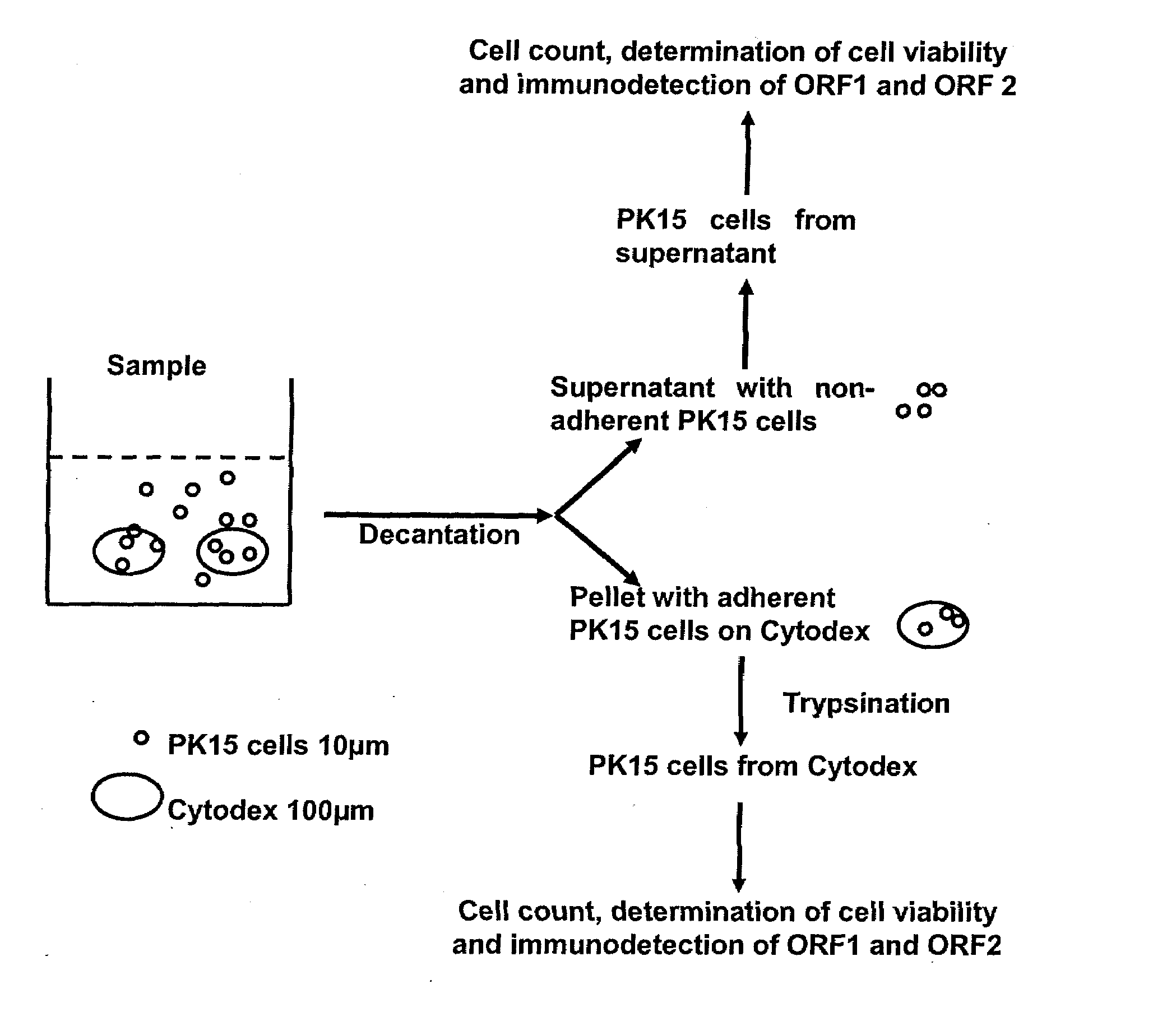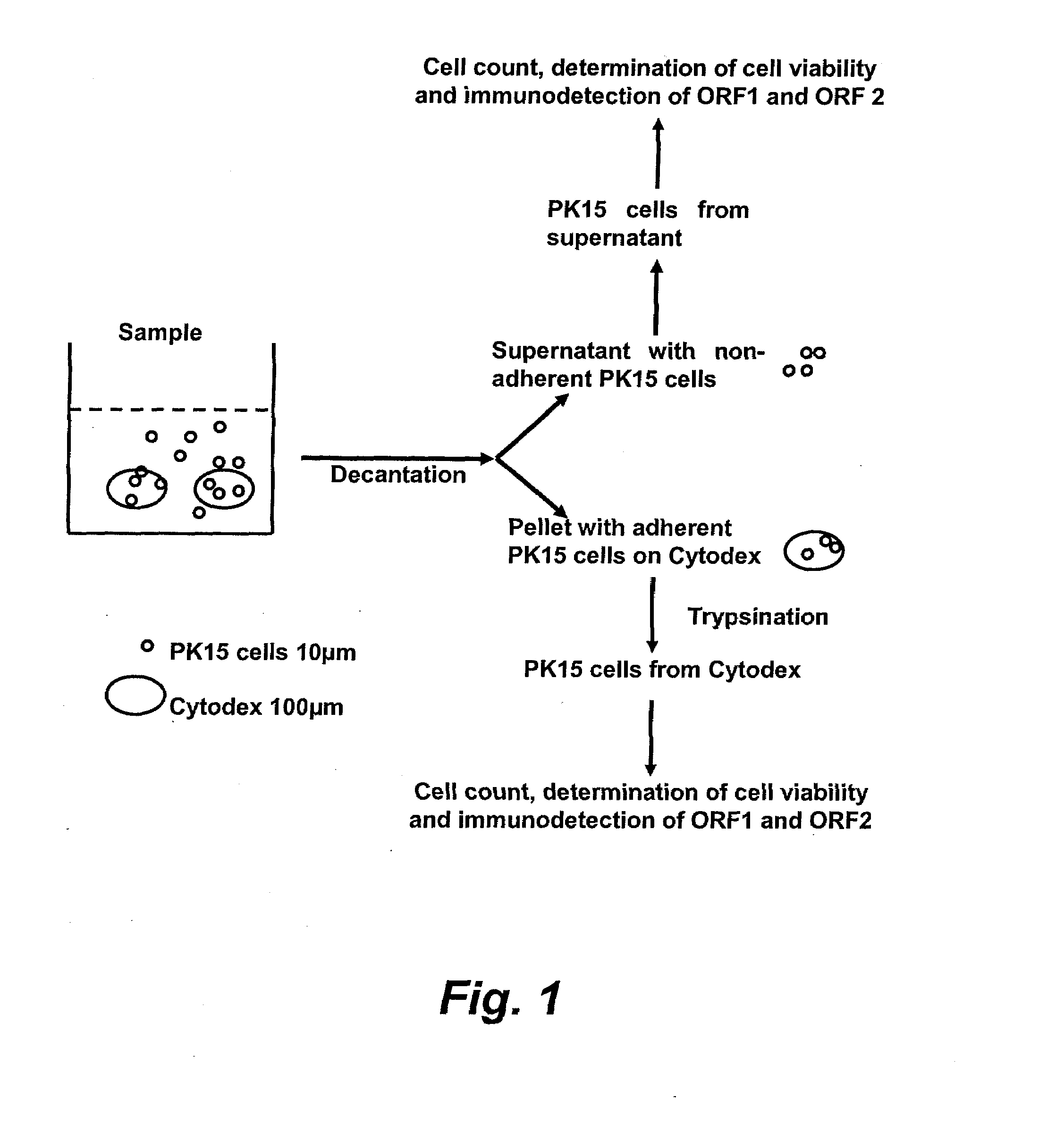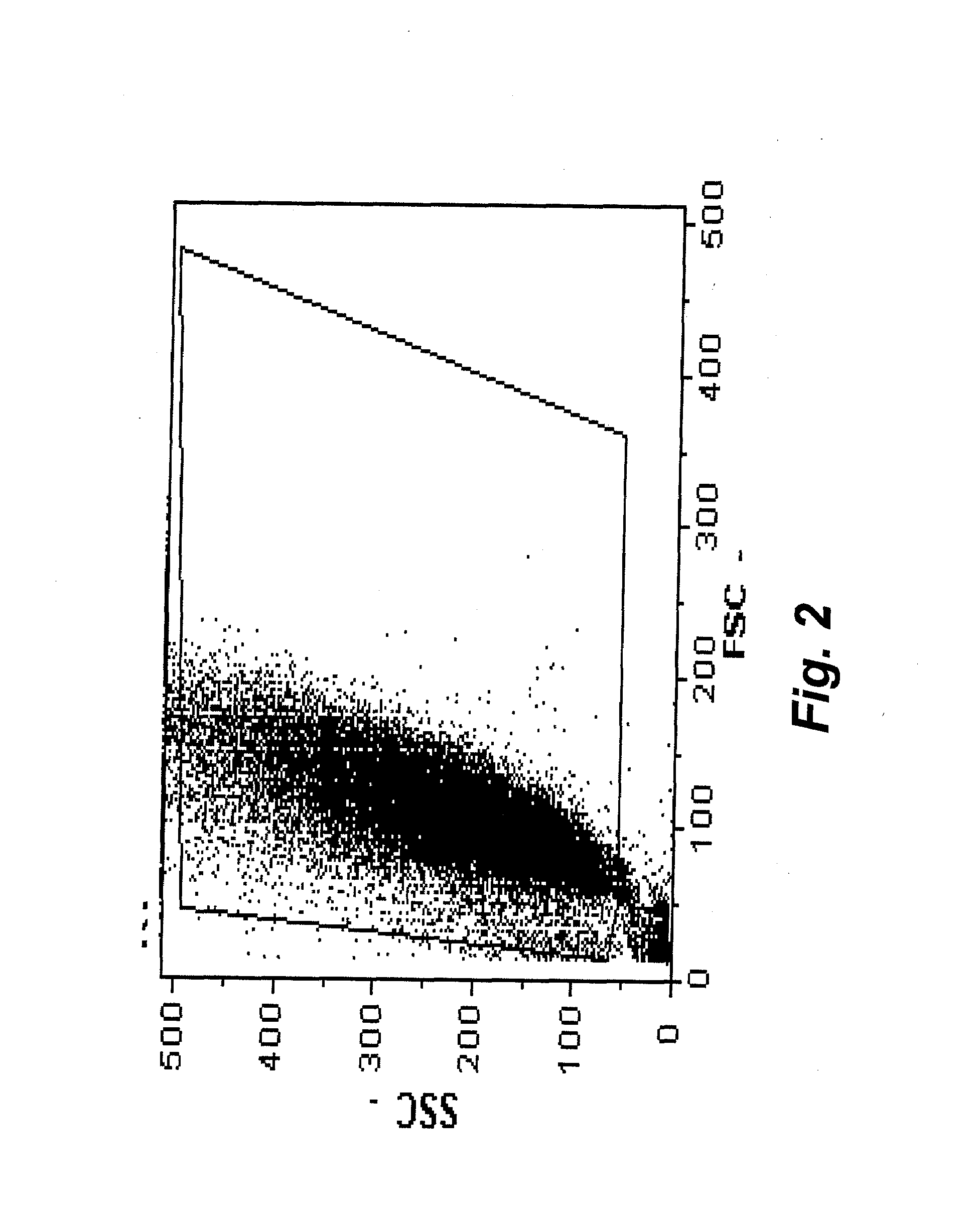Assay for porcine circovirus production
a technology of porcine circovirus and porcine intestine, which is applied in the field of porcine circovirus production, can solve the problems of insufficient treatment and prevention of this disease, and treatment must be performed with caution
- Summary
- Abstract
- Description
- Claims
- Application Information
AI Technical Summary
Benefits of technology
Problems solved by technology
Method used
Image
Examples
example 1
Correspondence between the Designations of ORFs of Circovirus PCV2
[0081]The ORFs of circovirus PCV2, their equivalent designators, and the respective sources thereof, incorporated herein by reference in the entirety, are shown in Table 1 below. ORF1 and ORF2, as described by Meehan et al. (1997; 1998) have been alternatively designated as ORFs 4 and 13 respectively.
TABLE 1PCV2 ORF numbering and equivalentsExample 2: Assay of viability, Detecting ORF1 andORF2 in PCV2-infected PK-15 cellsORF NumberingAlternative DesignationsMeehan et al.U.S. patentU.S. Patent Ser. Nos.J. Gen. Virol.application Ser.6,368,601, 6,391,314,78: 221-227No. 200201066396,660272, 6,217,883,Source(1997)to Wang et al.6,517,843, 6,497,8831142613327431054565371829610811912111312
(a) Determination of Cell Counts and Cell Viability
[0082]Propidium iodide was used to assess plasma membrane integrity. Propidium iodide is a fluorescent vital dye that stains nucleic acid. Dead cells incorporate propidium iodide which was d...
example 3
PK-15 Count and Viability after PCV2 Inoculation in Batch Seed Cultures
[0088]As shown in FIG. 3, At day 5 of the incubation period of a batch seed culture of PCV2 virus growing on PK-15 cells, 50% of the host cells were located in the supernatant and were mostly dead (73%). In contrast, 50% of the host cells were located on the CYTODEX™ (Amersham Biosciences, Inc) substratum support and were almost entirely a viable population (96%).
[0089]PCV2-infected PK-15 cells were detected at the end of the culture at day 5, but only in the supernatant cells using flow cytometry to detect ORF1 and ORF2. As shown, for example, in FIG. 6, the kinetics of the viral-specific antigen formation was dependent on the ORF: ORF1 was produced early and at low levels whilst ORF was produced later in the incubation cycle and at increasing levels.
example 4
ORF1 and ORF2 Total Staining
[0090]As shown in FIG. 6, for ORF1 there was no signal on cells membrane detected during the later phase of the culture incubation period. Table 2, below, shows that no membrane signals were detected on cells adherent to CYTODEX™ (Amersham Biosciences, Inc). Major ORF-specific signals were on cells from the culture supernatant and were increasing from day 2 to day 5. Results were similar for live or dead cells, with a maximum of 60% at day 4.
TABLE 2Count(total / ml)Cells from supernatantAdherent cells% of3.6 × 105Membrane +4.7 × 105Membrane +Total Cells43%Intracellular57%IntracellularStainingMembranecompartments.Membranecompartments.ORF135%ORF2 37% 60%
PUM
 Login to View More
Login to View More Abstract
Description
Claims
Application Information
 Login to View More
Login to View More - R&D
- Intellectual Property
- Life Sciences
- Materials
- Tech Scout
- Unparalleled Data Quality
- Higher Quality Content
- 60% Fewer Hallucinations
Browse by: Latest US Patents, China's latest patents, Technical Efficacy Thesaurus, Application Domain, Technology Topic, Popular Technical Reports.
© 2025 PatSnap. All rights reserved.Legal|Privacy policy|Modern Slavery Act Transparency Statement|Sitemap|About US| Contact US: help@patsnap.com



